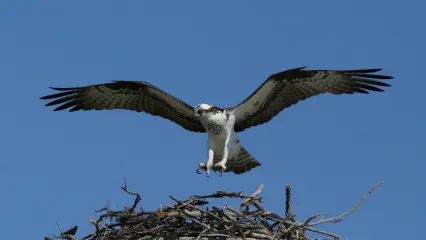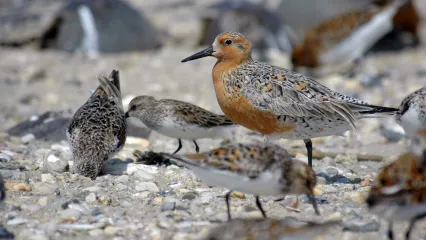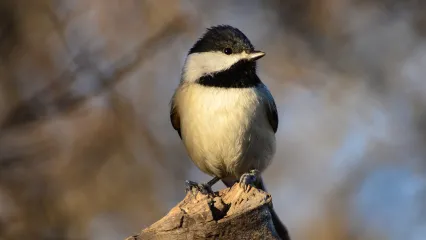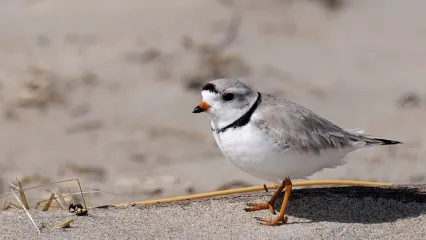
Description
If you ever have the opportunity to sit beside a large lake, like Texoma or Eufaula, and watch the osprey (Pandian naliaetus) dive into the cold water for a fish meal, you will be amazed at the show.
The osprey is a large, eagle-sized bird of prey whose diet consists mainly of fish, but has been known to eat rodents, reptiles and other birds. They hover over the water in search of an unsuspecting fish swimming close to the surface. Once located they dive into the water with wings back and talons ready to capture their prey and fly back to the nest or perch. Ospreys have been known to hit the water with such force that they break their wings. An adult can carry a fish up to four pounds, but have been drowned by large fish, like salmon and sturgeon, too big for the osprey to carry off.
Adults have a dark brown back with a white underbelly. The breast can be somewhat spotted or streaked with brown. The top of the head is white similar to the bald eagle, although ospreys also have a distinguishing dark band that runs across the side of their head. The undersides of the narrow wings have dark spots on the sharp bend of the wing.
Size
Adults range in length from 21-24 1/2 inches with a wingspan of 54-72 inches wide. Females are usually larger than males, but sexes look alike otherwise.
Habitat
Nesting takes place either singly or in colonies, in large, dead or dying trees in nests made of limbs, twigs, bones, seaweed, grass and most any other form of support. Both parents help build the nest and will use the same nest year after year. Nests have been known to weigh up to half a ton. Man has tried to help the osprey with nesting by building nesting platforms for them to use as well. This practice has helped to increase nesting efforts in certain areas. Ospreys have been known to nest in some other out of the ordinary places like chimneys of houses, telephone poles, tops of duck blinds, rock ledges and on school buildings.
Life Cycle
Nesting takes place from January to April in temperate parts of the U.S. Gestation is 32-33 days. Incubation begins with the first egg laid and usually consists of three eggs total. Eggs range in color from white to light brown with dark blotches. The female will not catch her own prey during incubation, but will rely on the male to feed her. Young will make their first flight after about seven and half to eight weeks. Young will return back to their natal area after approximately two to three years. Just like their cousin the bald eagle, adult ospreys will not breed until their third year.
How To Observe
The best time to watch for this magnificent bird is throughout the fall and winter. Whether you're a veteran bird watcher or a weary traveler, the osprey is a beautiful and graceful bird of prey you won't want to miss seeing in your travels throughout Oklahoma.


